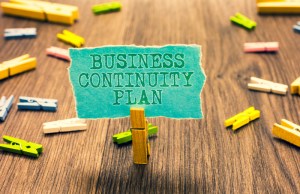
It is often said that the one predictable thing about life is that it’s unpredictable, and emergencies and natural disasters are no exception. Disasters can take many different forms but can all potentially have the same impact – unexpected, costly damage to your business and disruptions to your day-to-day operations. Despite the unpredictable nature of emergencies, you can put yourself and your business in a better position to recover if you are prepared. Here are some ways you can be ready if disaster were to strike.
Consider the Risks to Your Business
Approximately 25% of businesses do not reopen after disasters – but the ones that consider the risks to their business ahead of time are often better prepared to face and overcome them.
Businesses aren’t all affected by disasters in the same way. Each business has unique circumstances that can have an impact on how a disaster will affect their operations and financial position, and what their road to recovery will look like.
Additionally, businesses aren’t all affected by the same disasters. For example, a business in California might want to dedicate more resources toward earthquake preparedness than a business in New Jersey. Although earthquakes can happen anywhere without warning, devastating earthquakes are infrequent in New Jersey – making it less likely that one would cause a business there to sustain major damage. On the same note, emergencies don’t always have to occur from the environment specific to your area. Your business should also prepare for emergencies like cyberattacks or supply chain disruptions, where may not be able to access the resources needed to meet your customers’ needs.
It is important to consider the disasters that are more common in your area and industry so you can target your preparation and resources.
Make a Plan
Once you have considered the specific risks to your business, it’s time to formulate a response plan – or how you will effectively manage those risks.
Emergency plans are not one-size-fits-all; they should be tailored to your business and its specific strengths, weaknesses, and operations. An emergency plan, sometimes referred to as a business continuity plan, will help you prepare an effective response to recovering from a disaster before it happens. A few areas that should be addressed are critical functions, the potential disasters your business could face, immediate priorities, responsibilities of key employees, and strategies and timelines for recovery.
It is important to consider the key staff your plan includes. In small businesses, it is common for team members to wear many hats and have several responsibilities. In the face of an emergency, this could make it difficult for your staff to know which area to immediately prioritize. It could also make it difficult for them to be trained in the most important recovery areas, as they might have conflicting responsibilities. It is commonly said that a fence is only as strong as its weakest link – therefore, every team member should have clearly defined responsibilities and be effectively trained on how to prioritize them.
This plan should be stored in a place that is easy to access – and not where it can be destroyed in a disaster. The SBA Business Resilience Guide is a resource that can help you identify how to prepare for and recover from disasters, which can be included in your plans.
A business continuity plan will look different depending on the emergencies that are addressed. Consult the following resources from Ready.gov to better understand the different risks various disasters pose to your business’ finances and operations.
Practice the Plan
You don’t necessarily have to wait for disaster to strike to execute the plan. It’s a good idea to set aside time to run through the plan with your staff on an annual basis so that they are ready should a disaster occur.
Having an emergency plan in place can make a big difference in the outcome of your small business following a disaster. For more small business tips and resources, subscribe to our First Scoop Blog.
